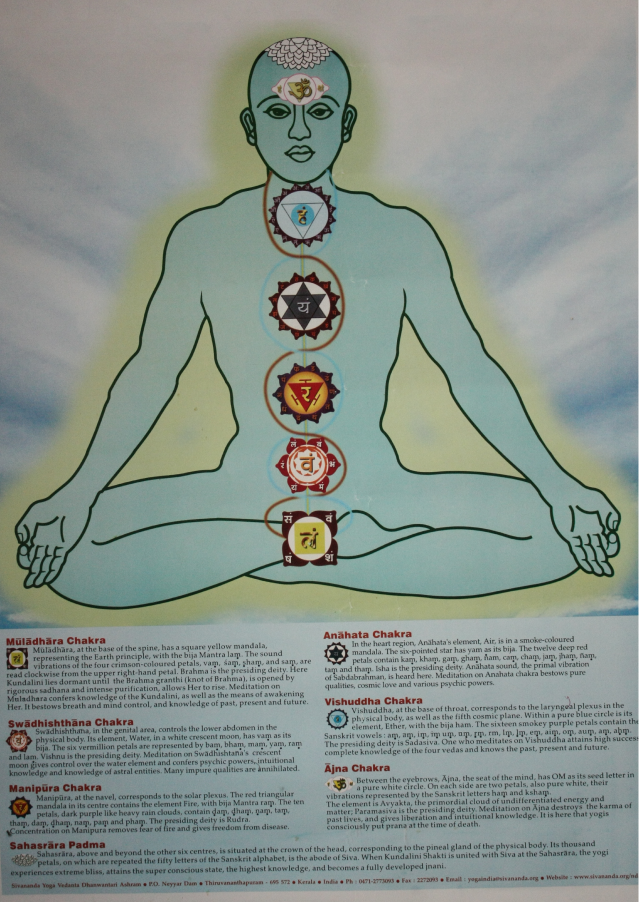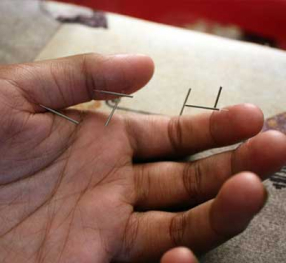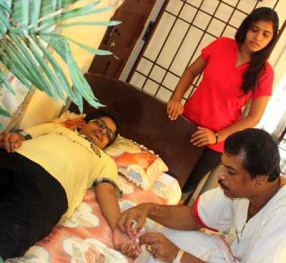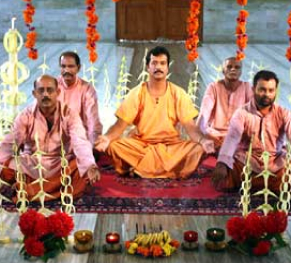Chakras

Centres of Spiritual Energy
Chakras are the centres of subtle, vital energy in the Sushumna nadi. They are storage places for energy forces or centres of consciousness. These chakras have corresponding centres in the spinal cord and the nerve plexus in the gross physical body. Since the physical centres have a close relationship with the astral centres, the vibrations that are produced in the physical centres by prescribed methods have the desired effects in the astral centres. As suggested earlier , each chakra represents a state of consciousness. It is a centre of subtle awareness and has a specific feeling, tone, bliss or joy. It is in effect, a storage place for energy forces. A particular characteristic predominates at every chakra. There is a presiding deity in each chakra. The seven principle chakras correspond to the seven lokas, astral or mental planes.
The locations of the chakras and their correspondence in the physical body are:
Muladhara: located at the lower end of the spinal column, corresponds to the sacral plexus.
Swadhisthana: at the genital organs, corresponds to the prostate plexus.
Manipura: at the navel, corresponds to the solar plexus.
Anahata: at the heart, corresponds to the cardiac plexus.
Vishuddha: at the throat, corresponds to the laryngeal plexus.
Ajana: between the etebrows, corresponds to the cavernous plexus.
Sahasrara: at the crown of the head.
When the kundalini is awakened, it passes from the Muladhara through all the chakras. At every centre to which the yogi directs the Kundalini, a special form of bliss is experienced. Siddhis, or psychic powers, and knowledge are gained.
Each chakra has a particular number of petals with a Sanskrit letter on each petal. The vibrations that are produced at each petal by the sound energy of the Kundalini Shakti is presented by a corresponding Sanskrit letter. Every letter denotes a mantra of Devi Kundalini, existing in a latent form. These can be manifested in the vibrations of the nadis felt during concentration.
The numbers of petals of the lotuses varies: At Muladhara(4), Swadhisthana (6), Manipura (10), Anahata (12), Vishuddha (16), and Ajana (2). All the fifty Sanskrit letters are on the fifty petals. The number of petals in each chakra is determined by the number and position of the nadis around it. Each chakra gives the appearance of a lotus with the nadis as its petals. The chakras have their petals hanging downward when the Kundalini is at the Muladhara Chakra. When it is awakened, they turn upwards i.e. they always face the side of the Kundalini.






